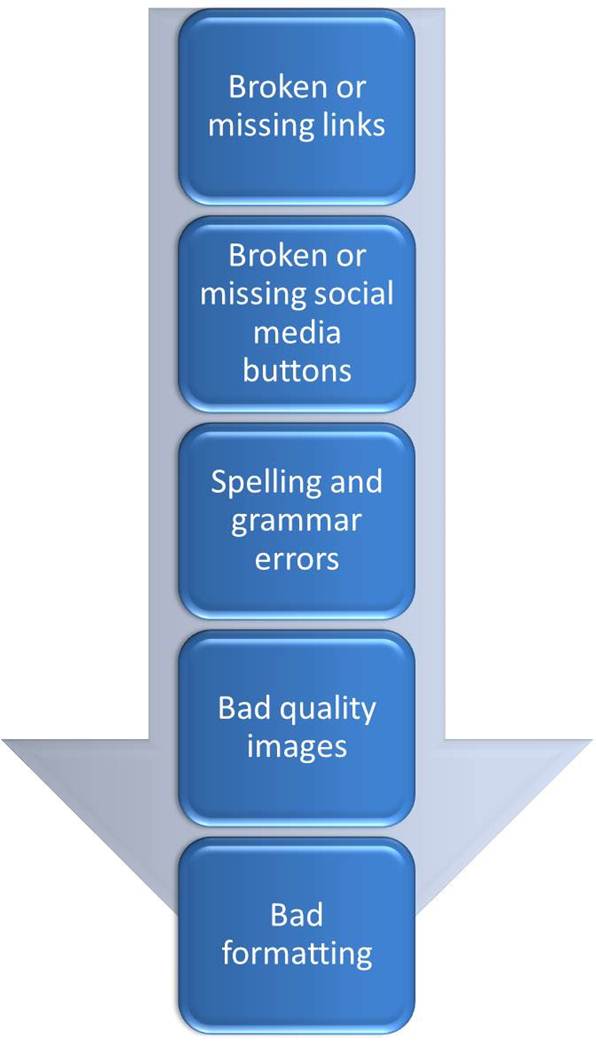Entries from June 2012 ↓
June 6th, 2012 — copywriting tips, Customer service, marketing, social media, social media marketing
Worldwide, there are now over 1 billion users of social media . Plus with over a quarter of all adults and half of all teens (Ofcom) owning a smartphone, access to social media sites has never been easier.
So with all those users out there, how do you, as a company owner, view social media?
Do you still see it as a fad (albeit a very popular one), or have you embraced it as part of your marketing and customer service strategy?
The two sides of social media for business
Did you see what I did there?
I asked whether social media was part of your marketing and customer service strategy.
Platforms such as Twitter and Facebook are 2 way conversations – you can offer advice and offers to your customers/followers and they can make comments and ask questions of you.
But, according to a recent article in The Drum, 70% of complaints made by customers on social media are ignored because many companies still view it as a purely marketing tool rather than a direct link for customer support.
Big mistake.
The research by A.T. Kearney’s annual social media survey found that between 5% and 20% of all complaints to many organisations are made through social media.
Of course, unlike traditional letter or phone complaints, those made using social media are visible to the world. Other customers can sit back and watch how you deal with a situation, giving them a good idea of what type of company you are and how seriously you take customer gripes.
Benefits of social media as a customer service tool
It’s fast.
It’s personal.
It can be used to offer help and advice to those who aren’t customers yet.
What more do I need to say?
Plus, because everything you write (unless it’s a DM through Twitter) is visible to your other followers, you can show yourself off as a company that puts its customers first and is willing to go that extra mile for them.
Brownie points all round.
Basically, using social media as a customer service tool will have a massive reputational impact on your business (sadly, that also means if you get it wrong it will have a negative impact too).
So make sure those in charge of your social media accounts understand your social media policy, monitor them regularly and respond quickly.
Jim Close, Managing Director or Datapoint sums it up:
“Social media tools are for two-way dialogue with customers as well as a (mostly) one-way marketing channel. They differ from more traditional media because often the interaction is globally-visible and there is potential for massive reputational impact. The organisation that learn this lesson the fastest – and use contact centre systems to do this effectively – will be the ones that win the customer retention race.”
Sally Ormond – Copywriter
June 4th, 2012 — internet marketing, social media, social media marketing
Social media is gradually taking over our lives – at least that’s how it feels.
With over a quarter of all adults and nearly half of all teens now owning a smart phone (Ofcom, 2011) connecting to the internet on the move has never been so easy. In fact, it is now so easy it is beginning to affect the way we shop.
Social media has opened up access to retailers like nothing else before it. Now, it’s easy to send a tweet or comment on a Facebook page. Our complaints, compliments and questions can be fired at them with ease.
So how is that affecting our shopping habits?
Well, according to recent research by Reevoo, consumers said that social content is now beginning to shape their online shopping behaviour. Over half of all consumers found social media comments helpful when shopping online, with user reviews (48%) and friend recommendations (52%) being the biggest influencers.
The vast majority (88%) said they always consulted reviews before proceeding to the checkout, with 60% adding they were more likely to purchase from a site that carried such reviews.
Ignore social media at your peril
With online social interaction carrying that much clout, it’s imperative that businesses today engage in social media.
And that really does mean ‘engage’.
Merely having the accounts is not enough. You must also monitor them, respond to comments and questions, and be proactive by offering advice. And that means having a strategy.
More often than not, your customers’ first point of interaction with you will be through a social media channel. That means you must be alert to their tweets and Facebook comments and ensure your staff have a firm understand of what your policy is regarding complaints and compliments.
Taking in the bigger picture
You may think that your social media interaction with customers and their product reviews are separate entities.
To a certain extent they are, but your interaction as a company with your customers is bound to have an effect on the review they leave for others. Frequently, you see such comments not only talking about the qualities of the product in question, but also about the service levels received from your company.
Reviews are therefore seen as an endorsement (or not) of your company as a whole.
Therefore it is essential that you have a social media strategy in place, provide the best possible service at all times and respond to your comments in a timely manner.
June 1st, 2012 — copywriting tips, email marketing, Essential tools for small businesses, marketing, newsletter
Email marketing and newsletter marketing are great.
They allow you to quickly contact thousands of customers in one go.
But the speed can sometimes be the downfall of many marketers, because once they’ve hit send, their message is out there – mistakes and all.

But that’s just the tip of the ice berg.
More seriously, they could easily fall foul of the CAN-SPAM Act, which provides the rules and regulations that have to be abided by for those undertaking commercial emailing and provides recipients of emails the right to make you stop sending them.
When undertaking email marketing, all your messages have to comply with the Act:
- You must not use misleading, deceptive or false information in your “To”, “From”, “Reply to”, subject line etc. You must specify whether the email is from a company or individual and the subject line must reflect the content of the email.
- Your physical postal address must be supplied on all emails.
- You must include an opt-out link and deal with every request promptly.
- Use a legitimate email service provider.
Always check before hitting send
We are all human so, occasionally, things go wrong.
But continuously sending out emails and newsletters that contain numerous errors is just sloppy.
Don’t forget that your company’s reputation is built on your correspondence with your customers, whether through emails, newsletters, web content, brochures etc. Therefore, it is essential you make sure you have thorough checking procedures in place.
Should the worse happen and something slips through the net, apologise and make it up to your customers. Never act in haste, because that could compound the problem.
Email marketing is a highly valuable tool for any business. But it’s essential it’s done well. Make sure your emails comply with the regulations set out in the CAN-SPAM Act and their content is thoroughly checked before hitting send.








